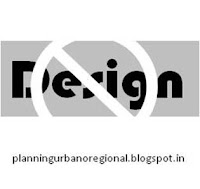Rethinking entrance process for higher education
University entrance interview, a day in a life of aspiring students, which is going to play an instrumental role in deciding their future course of life, on this occasion one has to be very careful to ask the right questions, and to assess the candidates holistically. Even in that short period of interview candidates should be judged not only on technical grounds but on many more qualitative parameters as well, like their tenacity to learn, adaptability to new environment, receptiveness to new thoughts, respect to righteousness, having courage to put forth their ideas in which they believe, an ever questioning and inquisitive mind etc. different institutes use different mix of these and many other parameters to identify the right minds for their institutes and universities. Good news is that today institution’s focus is already started shifting from simply technical and quantitative aspects to perceptual, analytical and other qualitative aspects of candidate’s persona in the academic interview process.
Still many prominent educational institutes have apparently not been able to embrace the pleasant change which new information age is providing today. They still seem to be caught in the same old technical assessment issues when it comes to academic entrance process. Still asking basic technical and quantitative questions like it’s a quiz show running instead of an interview. For instance; questions like “Who conceptualised Garden City?” or “what are the sources of municipal finance?” or “What are the main elements/ components of so and so?” or “what do you know about such and such thing?” are wrong questions to ask today. Who designed what in which city in which year in which architectural style, how does it matter here, who cares? Asking such questions to a kid already or soon to be laced with smart-phone is irrelevant these days. Right question to ask are “How relevant you think is the garden city concept today?” (Explain the concept first, even if you have to), “What do you think can be possible innovative sources of income for a municipal body?” (no matter how bizarre is the answer, let’s face it) what are the takeaways from that architectural style (show them the images even if you have to, even if they don’t know a bit about that building or that architect), ask them about their perception, what do they think what’s so great or ugly about that design without being judgmental or biased, how relevant is that design today and so on.
When they have all the quantitative information at their fingertips through internet, social and professional networking and all, they can’t afford to memorize encyclopedia of architecture or planning to get admission in architecture or planning institute, there is no need to do that. These new breed of candidates should be rather judged on their aptitude to analytically infer and logically translate the available information for a better world. They should be judged on their apparent intensity and inclination to learn rather than memorizing capability. After all they will be here in institute for few months or years, so they can always be taught those technical aspects they don’t know yet, but these technical and factual questions are no ground to judge their capabilities, no ground to accept or to reject them at this point of time.
By Anoop Jha






